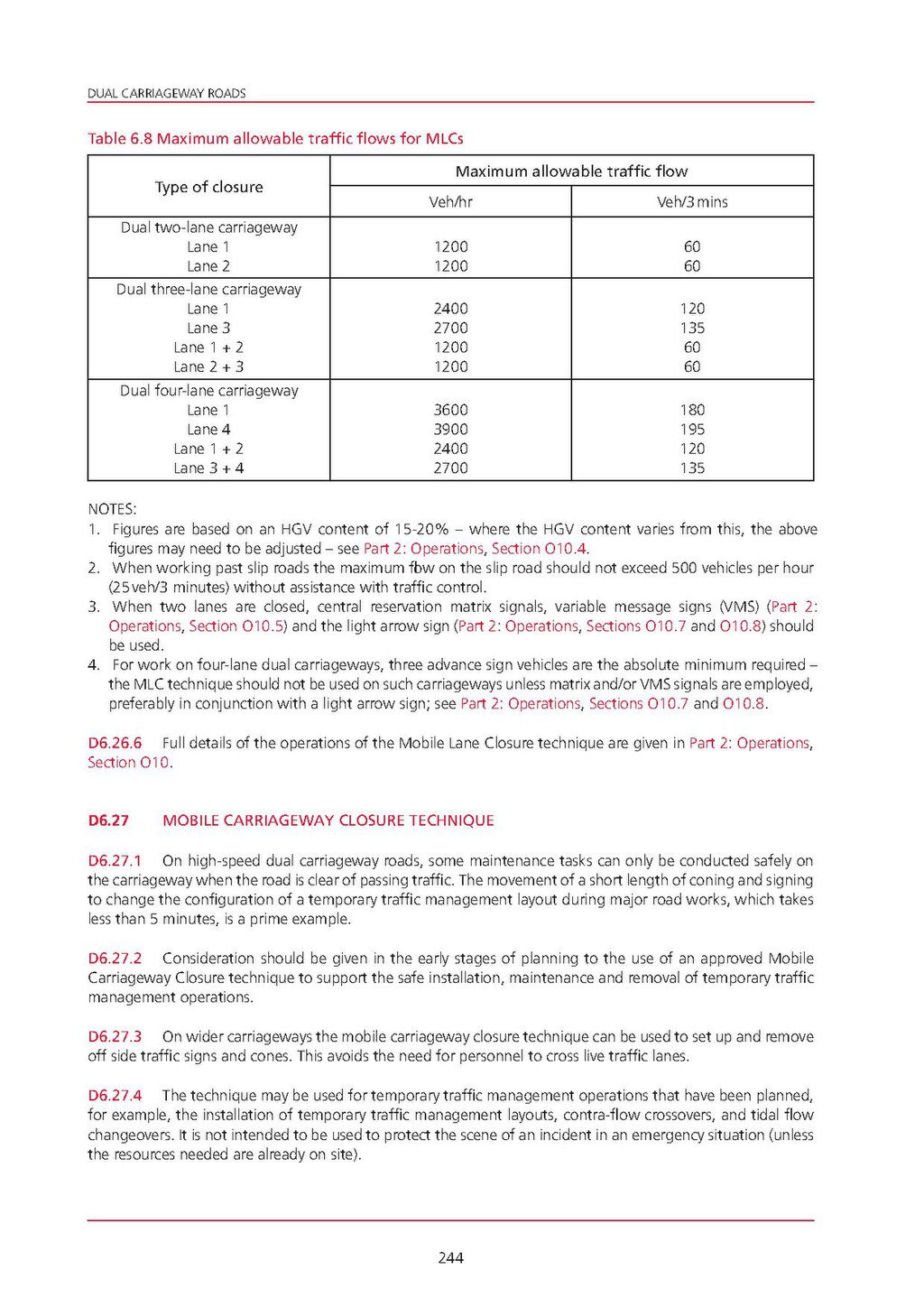| Type of closure | Maximum allowable traffic flow | |
|---|---|---|
| Veh/hr | Veh/3 mins | |
| Dual two-lane carriageway | ||
| Lane 1 | 1200 | 60 |
| Lane 2 | 1200 | 60 |
| Dual three-lane carriageway | ||
| Lane 1 | 2400 | 120 |
| Lane 3 | 2700 | 135 |
| Lane 1 + 2 | 1200 | 60 |
| Lane 2 + 3 | 1200 | 60 |
| Dual four-lane carriageway | ||
| Lane 1 | 3600 | 180 |
| Lane 4 | 3900 | 195 |
| Lane 1 + 2 | 2400 | 120 |
| Lane 3 + 4 | 2700 | 135 |
NOTES:
- Figures are based on an HGV content of 15-20% — where the HGV content varies from this, the above figures may need to be adjusted — see Part 2: Operations, Section 010.4.
- When working past slip roads the maximum flaw on the slip road should not exceed 500 vehicles per hour (25veh/3 minutes) without assistance with traffic control.
- When two lanes are closed, central reservation matrix signals, variable message signs (VMS) (Part 2: Operations, Section O10.5) and the light arrow sign (Part 2: Operations, Sections O10.7 and O10.8) should be used.
- For work on four-lane dual carriageways, three advance sign vehicles are the absolute minimum required — the MLC technique should not be used on such carriageways unless matrix and/or VMS signals are employed, preferably in conjunction with a light arrow sign, see Part 2: Operations, Sections O107 and O10.8.
D6.26.6 Full details of the operations of the Mobile Lane Closure technique are given in Part 2: Operations, Section O10.
D6.27MOBILE CARRIAGEWAY CLOSURE TECHNIQUE
D6.27.1 On high-speed dual carriageway roads, some maintenance tasks can only be conducted safely on the carriageway when the road is clear of passing traffic. The movement of a short length of coning and signing to change the configuration of a temporary traffic management layout during major road works, which takes less than 5 minutes, is a prime example.
D6.27.2 Consideration should be given in the early stages of planning to the use of an approved Mobile Carriageway Closure technique to support the safe installation, maintenance and removal of temporary traffic management operations.
D6.27.3 On wider carriageways the mobile carriageway closure technique can be used to set up and remove off side traffic signs and cones. This avoids the need for personnel to cross live traffic lanes.
D6.27.4 The technique may be used for temporary traffic management operations that have been planned, for example, the installation of temporary traffic management layouts, contra-flow crossovers, and tidal flow changeovers. It is not intended to be used to protect the scene of an incident in an emergency situation (unless the resources needed are already on site).
244
